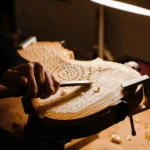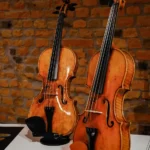A Brief History Lesson: Romantic Period Music
Back to BlogWhat’s your favorite piece of classical music? Beethoven? Mozart? These and many other composers emerged and contributed to Romantic Period Music. But what were exactly the characteristics of the period, and how did it come out. From around 1830 through 1900, the Romantic period saw compositions become increasingly expressive and inventive. Expansive symphonies, virtuosic piano music, dramatic operas, and passionate songs took inspiration from art and literature.
Romantic composers viewed storytelling through music as a means of emotional expression. They believed that the greatest art was the one that could tell the greatest stories and considered music the art form most capable of expressing the full range of human emotion.
The virtuoso composers that revolutionized the Romantic Period Music
The overly stringent structure of classical music gave way to freer and more flexible forms and a more direct tie to art, literature, and theatre. Beethoven ushered in the period known as Romanticism and expanded previously strict formulas for symphonies and sonatas like never before, introducing a new music approach that incorporated vivid references to people’s daily lives.
The tone poem, descriptive overture, and symphony have all become popular genres of stand-alone orchestral music, the latter two evoking anything from a painting or poem to a feeling of nationalistic fervor. It was a period of attitudes toward self-expression that grew out of the political ideas of individualism born during the Age of Enlightenment—rebelling against Industrial Revolution traits such as mechanization and urbanization that did not fit into their vision of the idealized, natural state of the human condition.
Franz Liszt was one of the greatest pianists of his time; he wrote music with extraordinary technical and musical demands to show off his own brilliance. Frédéric Chopin is also among the outstanding composer-performers from this time. In the world of opera, Giuseppe Verdi turned Italian opera on its head by introducing new subject material, often with social, political or nationalistic themes, and combined these with a direct approach to composing.
Another artist to mention was Germany’s Richard Wagner, who also had a role in the period. Before him, the action and music in opera were split into short pieces or ‘numbers’ much like a modern-day musical show. Wagner’s operas are written as long, continuous sweeps of music. The characters and ideas are given short signature melodies called leitmotifs.
His influence extended from large-scale symphonies and operas to instrumental tone poems and chamber works. The music became wackier and wackier until the rules had to be rewritten, setting the stage for the most dramatic shift in music in centuries – the beginning of Modernism.
What changes did the Romantic Period make?
During the Romantic Period, the piano underwent significant changes. The number of physical keys expanded from five to eight octaves. The materials used to construct piano frames shifted from wood to metal, and the durability of the metal used to manufacture its strings improved. These improvements enriched the pitch range and tonal quality of the piano.
Innovations such as developing the valve for brass instruments made woodwinds and brass even more abundant. Romantic composers flouted Classical rules. They arranged symphonies with more than four movements, and they composed single-movement works in a variety of distinct forms.
The etude was intended to showcase virtuosity and was viewed as a training exercise for students. Paganini‘s 24 Caprices for Solo Violin are good examples of this, as are many works by Chopin. The prelude was an earlier form of composition, used to introduce other works. Romantic composers did the same by creating the overture, such as Tchaikovsky’s Romeo and Juliet.









